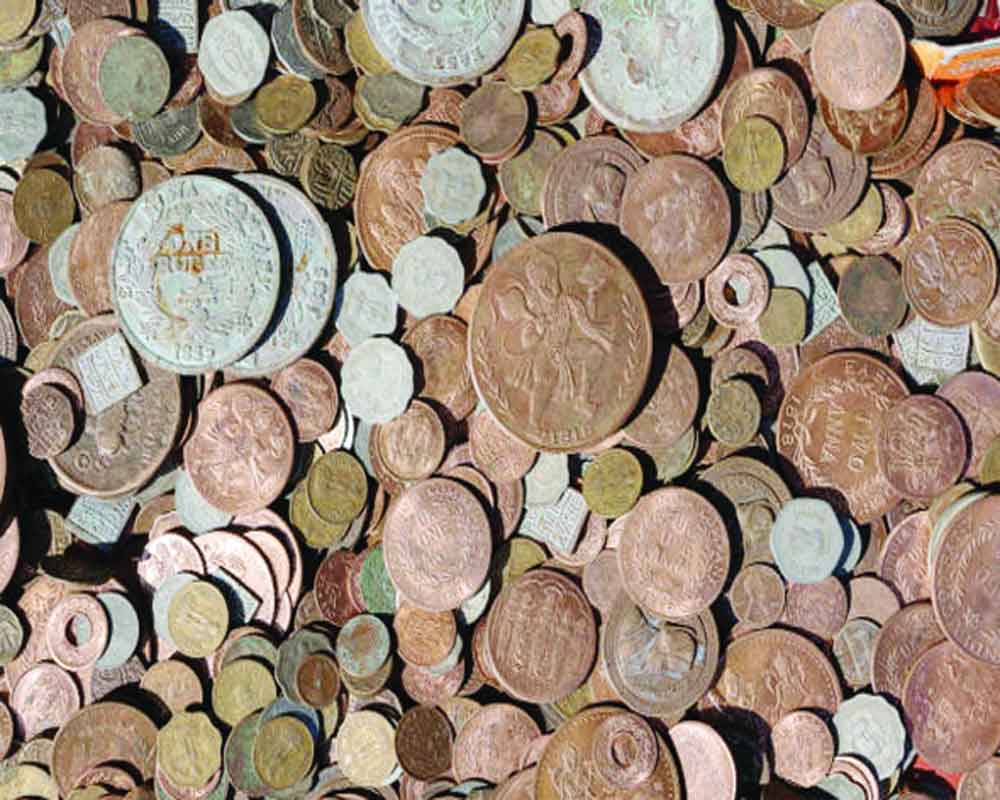From the humble beginnings of the pai to the modern era of the rupee, the narrative of inflation paints a vivid picture of economic transformation
One way of knowing about inflation in India is to place a series of old coins on a table, and compare those coins with today’s currency. Today, few would believe that well into the twentieth century, there was a pai which was 1/92nd of a rupee. 16 annas made a rupee; one anna was divided into four pice; one pice comprised three pais. One could, for example, buy puffed rice, gram or chana or peanuts for one pie. When that became impossible, the Government stopped minting the coin. The pice or three pais together continued to be minted until well after World War II. Today, a rupee is about the least required to buy anything; effectively ten rupees are required to acquire anything worthwhile, no matter how poor the buyer is. As a child of ten years, I ate my first chocobar made by a British company called Magnolias, delivered at one’s doorstep by a dry ice-filled cart at 25 paise. Today, its minimum price is Rs.10, which makes inflation look benign, 40 times between say and 2024, i.e., 77 years.
The price of the cheapest variety of rice against a Government-issued ration card in 1945 was three anas per seer or say nineteen paise per 800 grams. Today in 2024, similar rice would cost say forty rupees per kilogramme, or 1,000 grammes, say twenty-five rupees per seer or 132 times. Food grains have become much more expensive than ice-cream! Tea, which was at the first point of wholesale, was two rupees for the equivalent of one kilogramme, which is Rs. 150 today or 75 times higher. Commenting or inflation, a small shopkeeper or a hawker, would say no matter the inflation, we people are much better off than our parents and grandparents.
Inflation in the Western as well as other centuries is actually much higher than in India. This phenomenon does not show up because the exchange rates are adverse to the Indian rupee. The British pound is about Rs. 100 when exchanged, but its purchasing power in Britain is not much better than Rs. 10. This is primarily because India imports more than exports. The message is eloquent; must times our economy to be able to export more even if the payment is in rupees as well as in the importers currency which is viable.
There seems to be a systematic policy by Government to meet its purpose of meeting the economy’s money supply needs. Some more money has been provided for moderate growth so the path of prosperity and growth is steady. This is like a corporate house increasing its profit every year and an unemployed welcoming an increment annually.
To put it another way, the money or currency supply is increased moderately every year to enable the economy to grow and not shrink. The national or central bank of every country should manage its money. Another way of looking of inflation is creating money in advance of production is order to expand the economy.
It is like a loan without having to pay interest by the country’s economy. But with it, the duty of the central bank to watch the production of goods and service is increased commensurately, with the extra money printed every year. It is like an interest-free loan strictly in order for the economy to able for invest in the productivity of goods and services. This must be done efficiently, and in reasonable time.
The printing money is justified, but if there are delays in expending the facilities for production of goods and services, inflation would take place. This means that prices would grow and people would began to demand increase in their income. Since increasing taxation would bring further hardship on people’s pocket, the Government would have no alternative but to print more money in order to satisfy people’s legitimate demands.
This privilege of Governments of printing money at their discretion, is a luxury, but has cost quite a few countries, making them go virtually bankrupt. What else can one expect of an economy that is hit by inflation of say 80 per cent, year after year? Zimbabwe eventually grew tired of printing money, after doing it wantonly for a long time. It gave up the chase and declared the US dollar to be the only legal tender in the country.
Pakistan at present is in the grip of an inflationary spiral.
Even a much better organised country like Sri Lanka nearly went to the brink of being trapped in this spiral. Many others haven’t fared any better; a large country like Turkey is in the grip of such a spiral.
Not many years ago, Brazil found itself in a situation of having to reduce the value of its currency almost every morning. Hotels in Rio de Janeiro would quote their room rents in US dollars for the day, pasting the same on the room doors.
Contrast this financial jugglery with what William Pitt the Younger, who was Prime Minister of Britain at the turn of the 18th into the 19th century, did. He intended to make his tax collection exceed the national expenditure year after year, for a long enough time, so that Britain could be governed without raising taxes and the nation could run solely on the interest generated on treasury surpluses over the years.
(The writer is a well-known columnist, an author and a former member of the Rajya Sabha. The views expressed are personal)


























